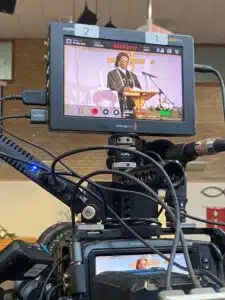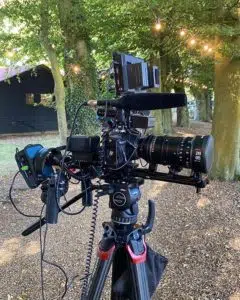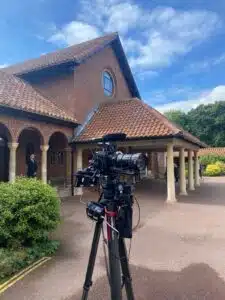Losing a loved one is one of the most challenging experiences in life. Funerals provide a space for family and friends to come together, remember, and celebrate the life of the deceased. In today’s digital age, funeral videography has become an invaluable way to preserve these moments, allowing those who could not attend to pay their respects from afar. However, it is essential that this service is conducted with the highest level of respect, discretion, and sensitivity. Professional funeral videographers are skilled in capturing these moments without intruding on the intimacy of the occasion.
The Importance of Funeral Videography
Funeral videography serves multiple purposes. It allows distant loved ones to participate virtually, provides a lasting tribute to the deceased, and can even serve as a source of comfort for grieving families. Many find solace in watching the ceremony at a later time, revisiting shared memories, and honoring their loved one’s legacy.
However, filming such a solemn event requires a special approach. Unlike other types of videography, funeral filming is not about staging moments or seeking perfect angles—it’s about subtly capturing the essence of the occasion while remaining nearly invisible to attendees.
How Funeral Videographers Maintain Discretion
1. Unobtrusive Equipment and Setup
Professional funeral videographers use minimal, high-quality equipment designed to blend into the surroundings. Tripods, discreet microphones, and compact cameras are strategically placed to avoid drawing attention while ensuring clear audio and video capture. Many use wireless systems to eliminate the need for bulky cables, reducing any distractions during the service.
2. Strategic Placement and Movement
Experienced videographers position themselves in low-visibility areas, ensuring they do not interfere with the proceedings. They anticipate key moments—such as speeches, hymns, and processions—and set up accordingly so that movement is minimized. Instead of moving around frequently, they rely on well-placed cameras and zoom functions to capture different angles without disruption.
3. Silent and Remote Operation
To avoid unnecessary noise, professional videographers operate their equipment remotely where possible. Many use silent cameras with no shutter sound, ensuring that the solemnity of the occasion remains undisturbed. If movement is required, it is done slowly and respectfully, avoiding any disruption to mourners.
4. Respectful Conduct and Attire
Funeral videographers understand the importance of blending in and maintaining a professional yet compassionate demeanor. They dress in dark, formal clothing, similar to other attendees, and follow strict guidelines on behavior to ensure they do not draw attention to themselves. Their presence should feel natural and respectful, never intrusive.
5. Capturing Genuine Emotions Without Intruding
A skilled videographer knows how to document raw, heartfelt moments without being intrusive. Rather than zooming in on individuals who may be visibly grieving, they focus on capturing the overall atmosphere, the heartfelt speeches, and the supportive interactions between family members and friends.
6. Respecting Privacy and Consent
A crucial aspect of funeral videography is respecting the privacy and wishes of the family. Professional videographers always discuss beforehand which aspects of the service should be recorded and if there are any individuals or moments that should remain private. Some families may request a fully private ceremony with only select moments filmed, while others may opt for live streaming to allow distant relatives to take part.
Live Streaming Funerals: Connecting Loved Ones Across Distances
Live streaming has become a valuable option for families who have relatives and friends unable to attend in person. Whether due to travel restrictions, health concerns, or personal circumstances, live streaming allows mourners to join in and pay their respects in real time.
With private, secure streaming options, families can ensure that only invited guests have access to the ceremony. Professional videographers use encrypted platforms and private links, ensuring the service remains dignified and intimate while being accessible to those who need it.
The Role of Editing in Funeral Videography
Once the service has been recorded, the next step is careful and respectful editing. Unlike celebratory events, funeral videos require a thoughtful touch. Editors focus on:
- Removing unnecessary footage while preserving the natural flow of the service.
- Enhancing audio to ensure clarity of eulogies and readings.
- Adding soft transitions to maintain the solemn and respectful tone.
- Creating optional highlights for families who prefer a shorter version of the recording.
The final video serves as a heartfelt memorial that can be revisited in times of remembrance, offering comfort to those who need it most.
Choosing the Right Funeral Videographer
Selecting the right videographer is crucial to ensuring a respectful and seamless experience. Here are a few key factors to consider:
- Experience: Look for professionals who specialize in funeral videography and understand the delicate nature of these events.
- Discretion: A skilled videographer should be nearly invisible during the service while still capturing meaningful moments.
- Privacy Assurance: Ensure they offer secure storage and privacy options, especially for live-streamed events.
- Compassion and Sensitivity: Choose someone who understands the grieving process and approaches their work with empathy.
Conclusion
Funeral videography, when done with care and discretion, serves as a powerful way to honor a loved one’s memory while allowing those who cannot be present to share in the moment. Professional videographers use subtle techniques, respectful conduct, and discreet technology to ensure they capture the essence of the service without intruding on the grieving process.If you are considering funeral filming or live streaming for a loved one’s service, it is important to choose a compassionate and experienced professional. To learn more about how we provide respectful funeral videography services, visit funeralfilming.co.uk.
Frequently Asked Questions
1. Is funeral videography intrusive?
No, professional funeral videographers operate with discretion, using minimal equipment and maintaining a respectful distance to ensure privacy and sensitivity.
2. Can I choose which parts of the funeral are recorded?
Yes, most funeral videographers work closely with families to determine what moments should be captured and which should remain private.
3. How is the final video delivered?
The final video is usually provided as a secure digital download or a physical copy, depending on your preference. Some videographers also offer private online viewing options.
4. How long does it take to receive the final video?
Editing times vary, but most funeral videographers deliver the final video within 1 to 3 weeks, ensuring high-quality and respectful presentation.
5. Is it appropriate to record a funeral service?
Yes, many families find it meaningful to have a recorded memory of the service, especially for loved ones who couldn’t attend in person.
6. What if we want a private or small recording?
Funeral videographers can tailor their services to record only specific portions, such as eulogies or tributes, ensuring a discreet and personalized experience.


